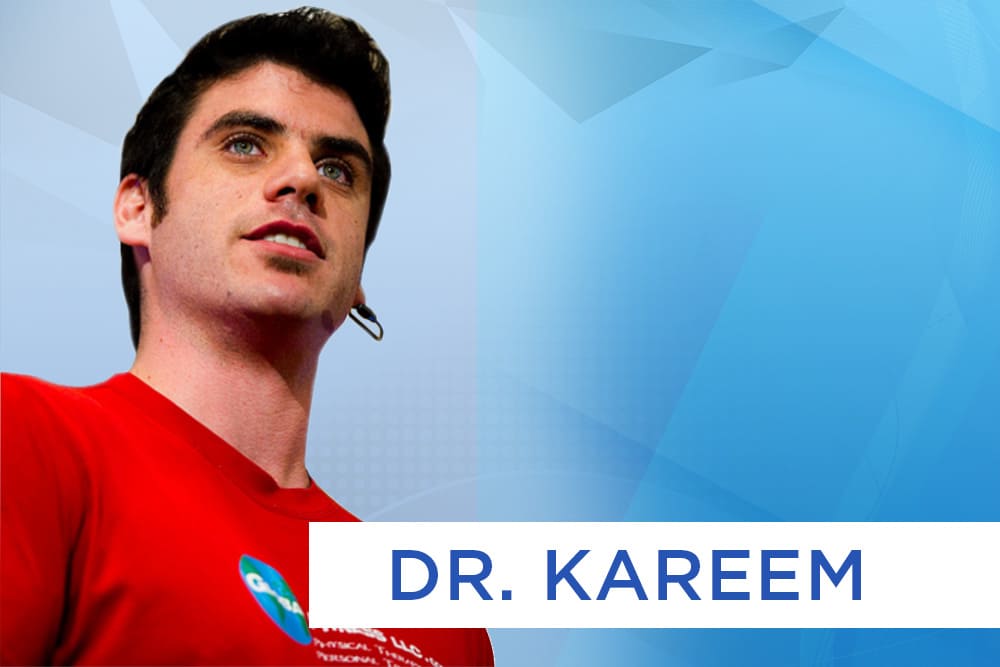The Real ‘Mechanisms’ That Create Short-Term and Long-Lasting Pain Relief
If we make things really simple, here’s how it works:
1.) Pain medication blocks the nerve signal that is letting you know something is wrong.
2.) Pain relief comes from fixing whatever is wrong, but oftentimes this is difficult to do when you’re in so much pain and can hardly get anything accomplished.
Pain medication is great if you simply cannot function without it, or you just underwent something traumatic like surgery and there’s no physiological reason to be in pain outside of this direct trauma and now you’re sore. In other words, the pain is not protecting you in any way, because you know to be careful in this area, and it’s only temporary.
Pain medication works through various mechanisms such as hormonal and neurotransmitter releases, or even as extreme as triggering the opiod mechanism in our bodies, which is 1000x more powerful than morphine. In all cases, there is an increase use of our livers to filter this toxin from our bodies, and our bodies are smart enough to stop producing pain relief on their own, after awhile, when they know it’s being supplemented.
The biggest trouble with pain medications over time is that our bodies will adapt, and our pain tolerances will become lower. It’s really important to understand that if you choose to use pain medication for anything outside of really acute pain, do so with caution. It’s best to “use” pain medication, in the sense that you’re using it to buy you a window to exercise and fix the problem.
Once you begin to observe this philosophy for pain relief, you’re planning to actually heal. Now, it’s time to start figuring out the root cause of your pain, and how you’re going to plan to eliminate it…
Identify The Root Cause Of Your Pain:
This is most difficult if you’ve had a ton of issues over the years, and you’re not even sure when your body started to fall apart, but I want you to think through this, anyway, and get as close as you can. Your body began a process of self-deterioration as a result of a disease process, or an internal conflict that put your body into a process of self-destruction.
This is hard to wrap your head around, I know, but think about this from a logical perspective. If there wasn’t one major trauma to your body that totally changed the game and your body has never been the same since, or there’s no insidious process taking place that’s slowly eating away at your organs, then why are you in so much pain?
Your body is trying to tell you something. It’s explaining to you that something is wrong, and it’s asking for your attention. Wait long enough, and it will demand your attention. That’s what I’m here for… to teach you how to communicate back and ask the right questions, while you listen for answers.
Communicate With Your Body & Learn What’s Holding You Back:
Communication with your body is through a very simple experimentation process, provided that you’re already seeking proper medical care. If you were to come into my office and get an evaluation, I’d ask you specific questions as they relate to your injury. Here’s a list of some of those questions:
- Why are you here right now? What’s causing you discomfort of some kind?
- How long has this been going on?
- How intense is it?On a scale of 0 to 10, where:
0 = no pain whatsoever
10 = worst pain imaginableHow intense is your pain right now? - How would you describer your pain, if you had to select from one or more of the following words:
Sharp, shooting Deep Sharp, but stays in one place Numb Dull and achy Electrical/Shooting Superficial (close to skin) Throbbing or Pulsating Cold Hot - What increases your pain/symptom?
- What decreases your pain/symptom? In other words, what makes it feel better?
- Have you had any medical exams performed, such as a doctor’s visit, X-Ray, MRI, etc.?
- Do you have any allergies that might affect your treatment? Or any other special considerations?
Once you begin to gather this data, you can start to find the best path to pain relief, and reverse engineer the process to get ultimate relief.
I’d like you to take the time to answer each question above on a separate piece of paper, or in the comments section below. When 150 people comment, I’ll randomly be selecting people who comment as ‘case studies’ and demonstrate some of the possibilities for optimum treatment and outcomes.
Good luck!
About Author
Dr. Kareem Samhouri
Dr. Kareem Samhour is known as (perhaps) the best Doctor of Physical Therapy & Kinesiologist on the internet. People come to him for results when other methods fail, injury gets in the way, or health situation is more complicated. Dr. Kareem Samhouri exercising In fact, he and his companies reach a combined total of 1.5 MILLION people on a daily basis to help them with their health. If you ever saw Dr. Kareem on the street and mentioned something was going on with your health, however, he would volunteer and offer to help you for free... that's the Dr. Kareem way.







